Snow Pea Tamago-Toji is one of the most popular dishes featuring snow peas in Japan. The flavor and texture of snow peas pair beautifully with fluffy scrambled eggs, offering a delicate yet flavorful taste of Japanese cuisine.
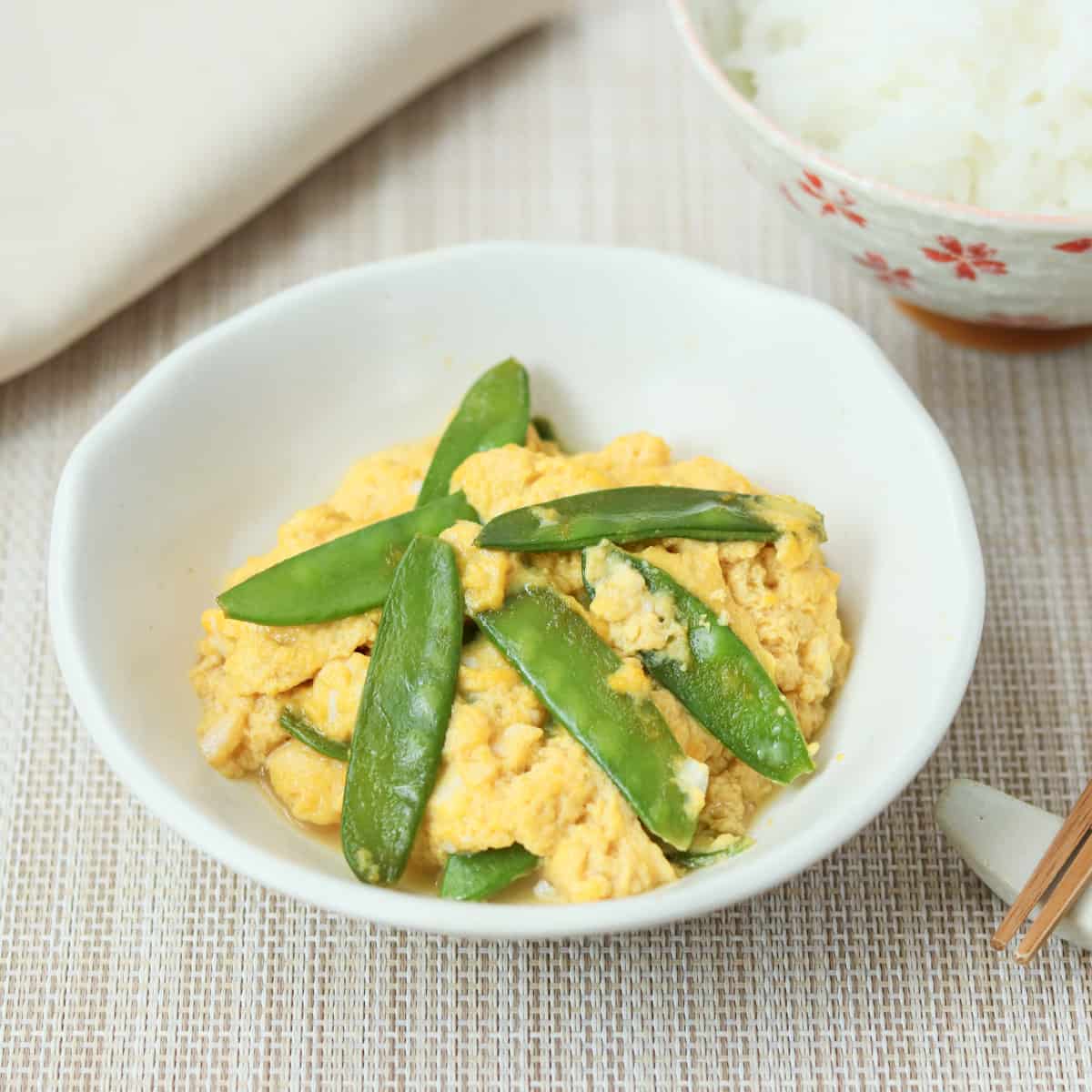
Jump to:
What is Snow Pea Tamago-Toji?
Snow Pea Tamago-Toji is a dish made by simmering snow peas with beaten eggs, dashi stock, and traditional Japanese seasonings. "Tamago" means egg, and "Toji" refers to the technique of binding ingredients together. The flavor of the snow peas blends with the eggs, creating a harmonious taste. This dish contains many elements of Japanese cuisine, making it a perfect choice for those looking for a Japanese recipe that features snow peas.
The combination of eggs and dashi is surprisingly harmonious, and this pairing also appears in various Japanese dishes, such as Chawanmushi (savory egg custard), Dashimaki Tamago (rolled omelet with dashi), and Kakitamajiru (Japanese egg drop soup). Once you try it, you will be captivated by its comforting flavor—so be sure to give it a try.
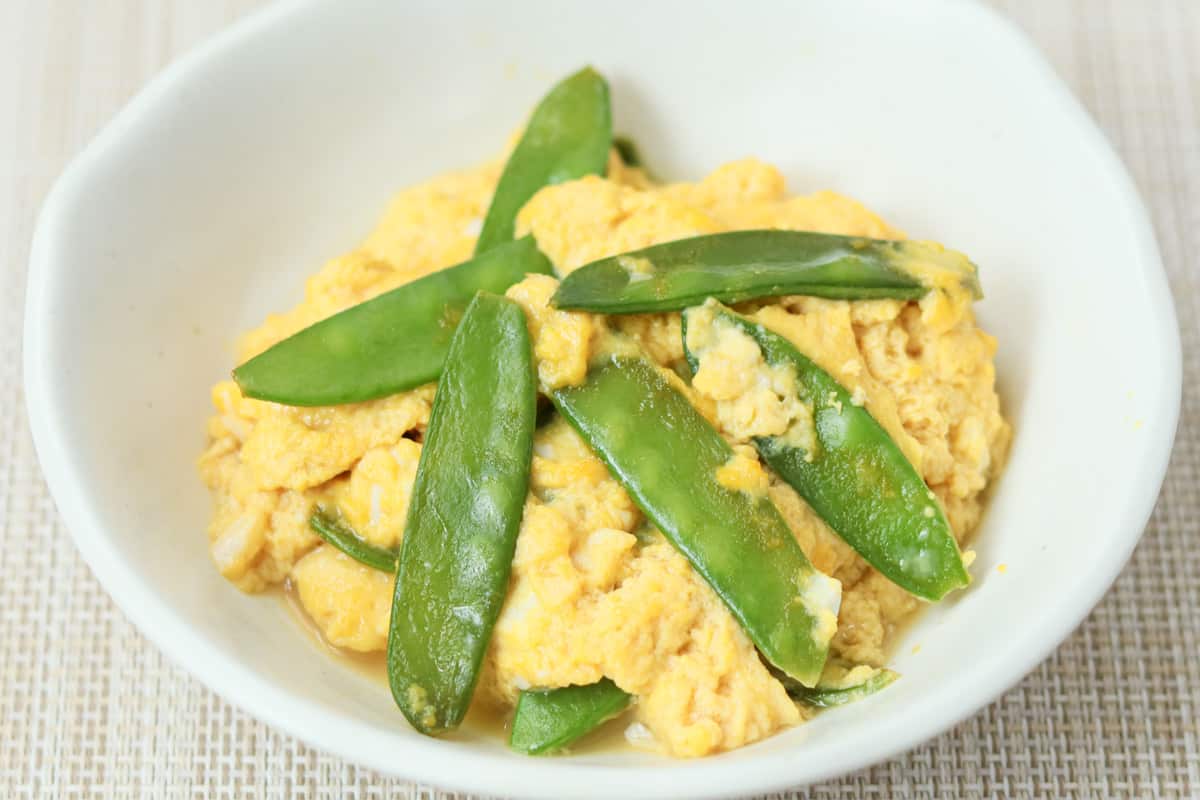
The role of snow peas in tamago-toji
Snow peas are considered one of the ideal ingredients for tamago-toji. They are not only rich in nutrients such as beta-carotene and vitamin C, but also contain a high amount of glutamic acid, an umami component.
The reason they are typically used in tamago-toji is that the umami component in snow peas pairs well with another umami component—inosinic acid—found in eggs and often present in dashi stock. It is known that combining two (or more) different umami components enhances each individual flavor through a synergistic effect, making the dish more flavorful. In other words, using snow peas, eggs, and dashi together enhances the flavor and creates a harmonious taste in the dish.
If snow peas are not available, you can substitute them with green peas, which are also high in glutamic acid. In this case, since green pea pods are tough and inedible, be sure to use only the peas themselves.
Optional additions
This dish is commonly made with just snow peas and eggs as the main ingredients, but you can also enjoy it by adding a small amount of additional ingredients. In Japan, kamaboko (fish cake), onions, carrots, and enoki mushrooms are sometimes included.
You are free to include these ingredients according to your preference, but if you do, it is best to keep the amounts small, as the main focus should remain on the snow peas and eggs. As long as you add just a small amount, there is no need to adjust the quantities of the other ingredients.
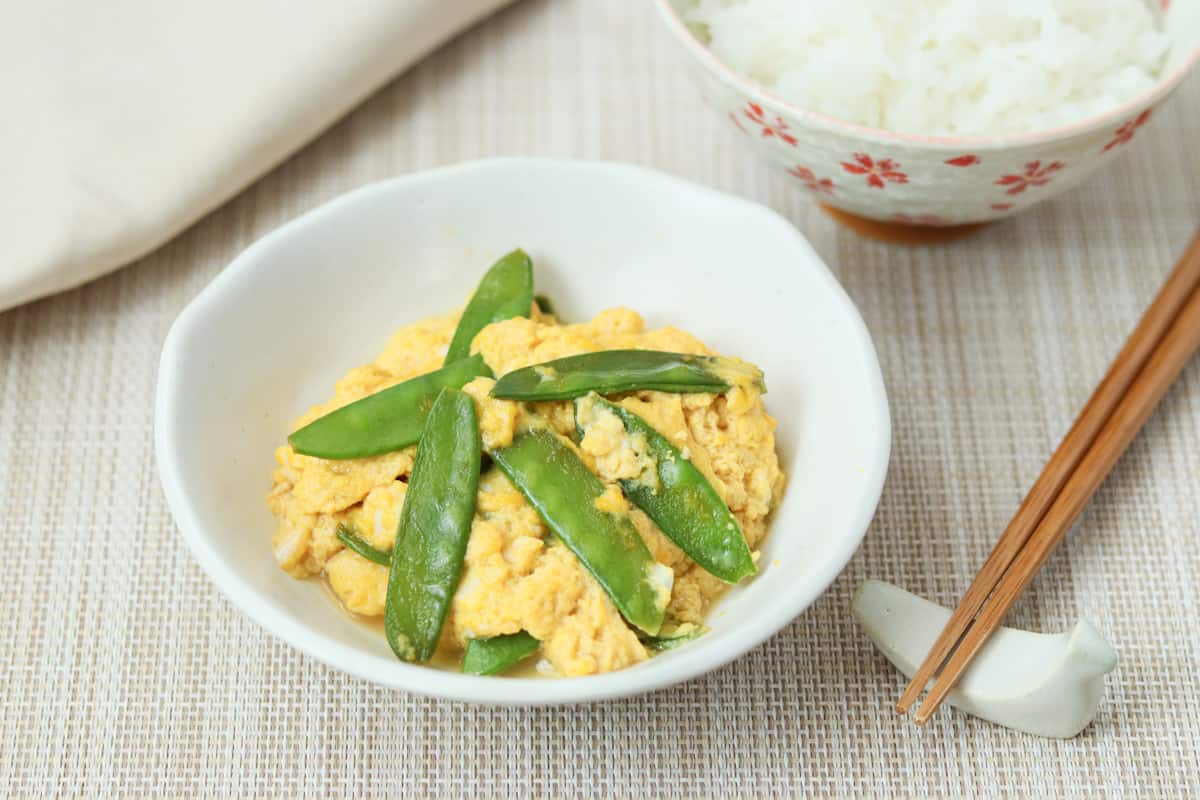
📋Step-by-step recipe
Ingredients
- 1.4 oz snow peas
- 2 large eggs (about 2.1 oz/60 g each, including shell)
- ⅓ cup dashi stock (Please refer to the linked page for instructions on how to make it. For plant-based options, see the pages on Kombu Dashi and Shiitake Dashi.)
- ½ Tbsp mirin
- ½ Tbsp soy sauce
Instructions
🕒 Total: 10 mins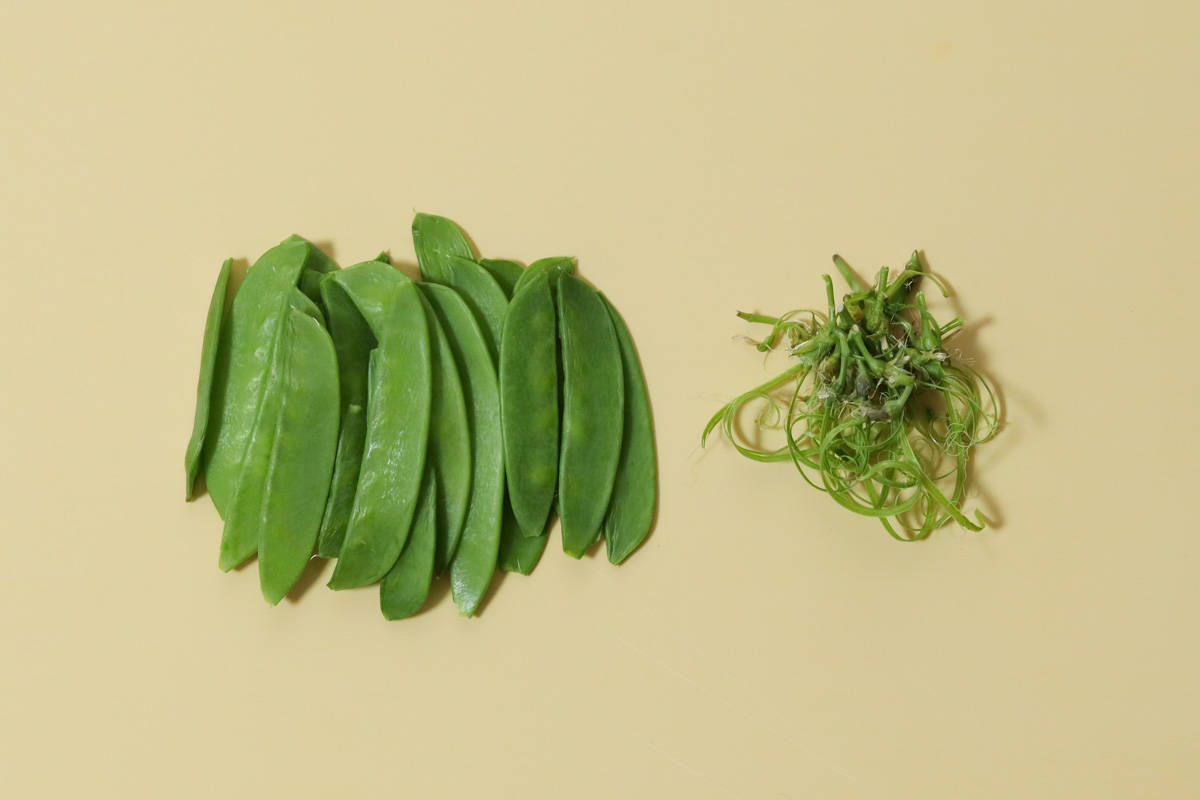
Step 1
Snap off the ends of the snow peas and remove the strings running along the seams of each pod.
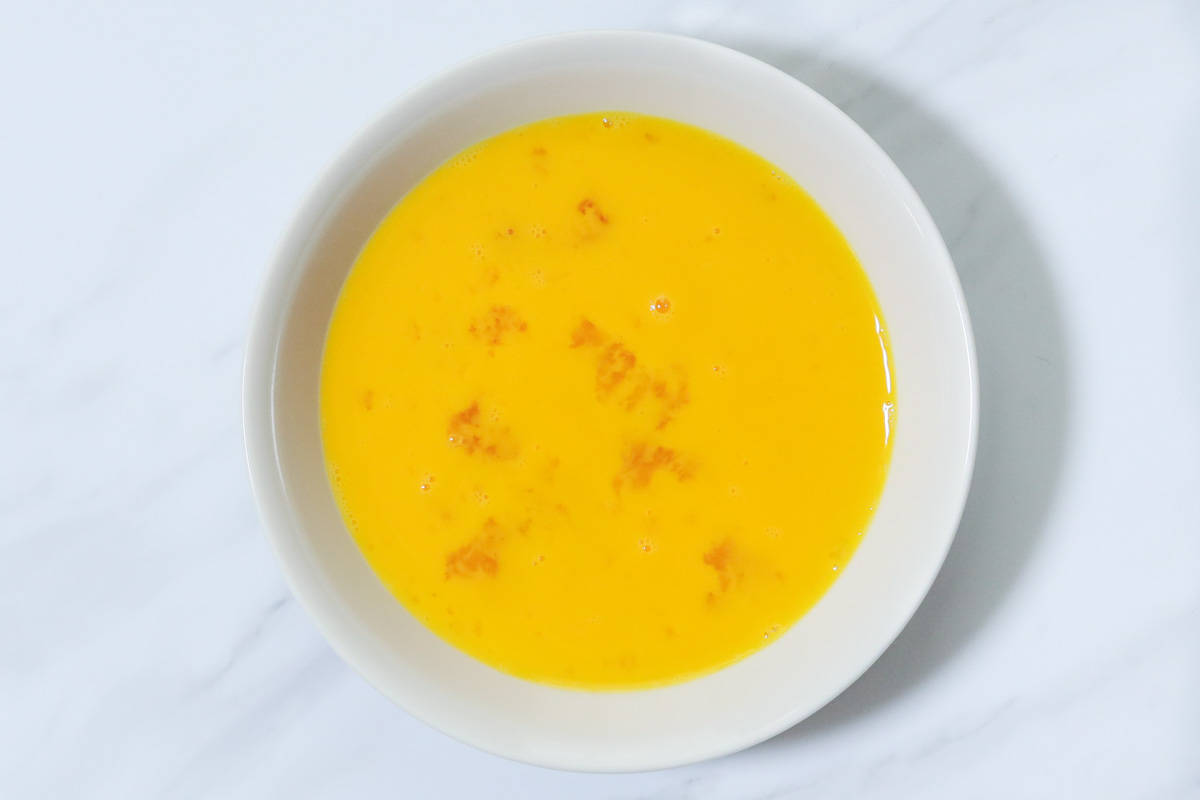
Step 2
Crack the eggs into a bowl and beat them.
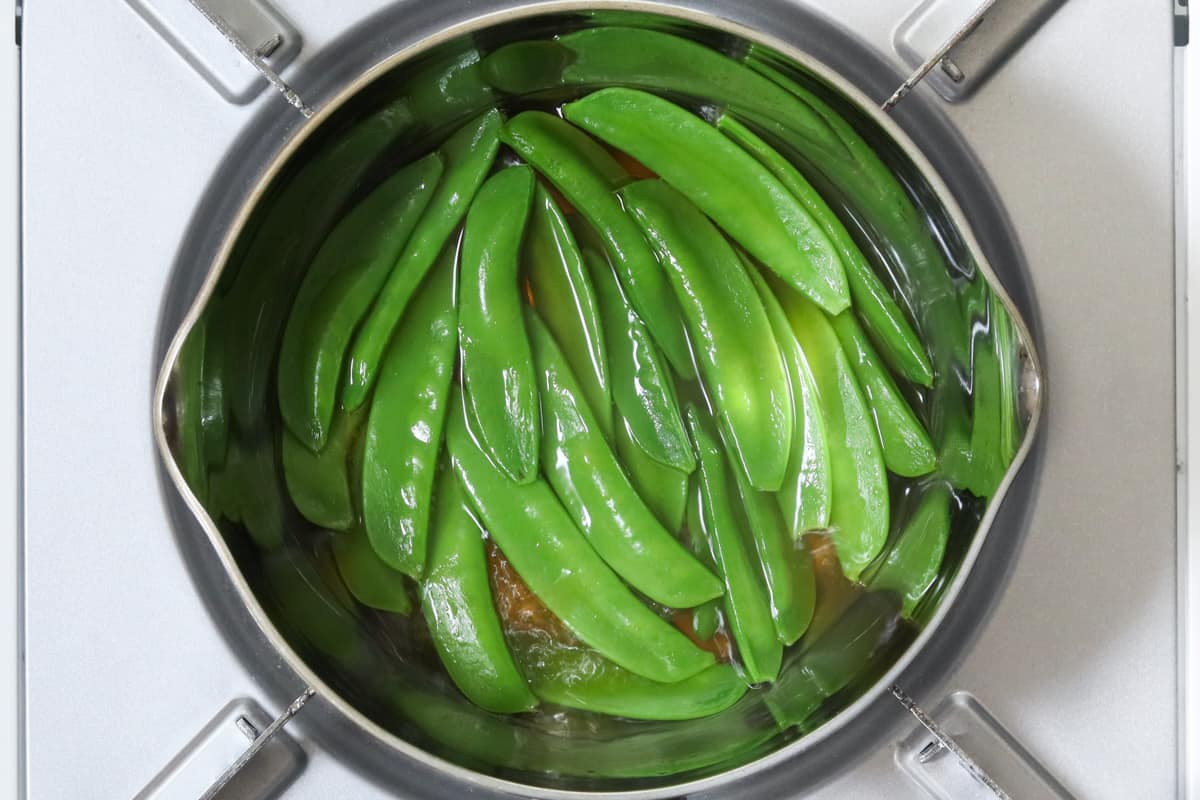
Step 3
Add dashi, mirin, and soy sauce to a pot and bring it to a boil. Once boiling, add the snow peas and simmer over medium heat for 3 minutes.
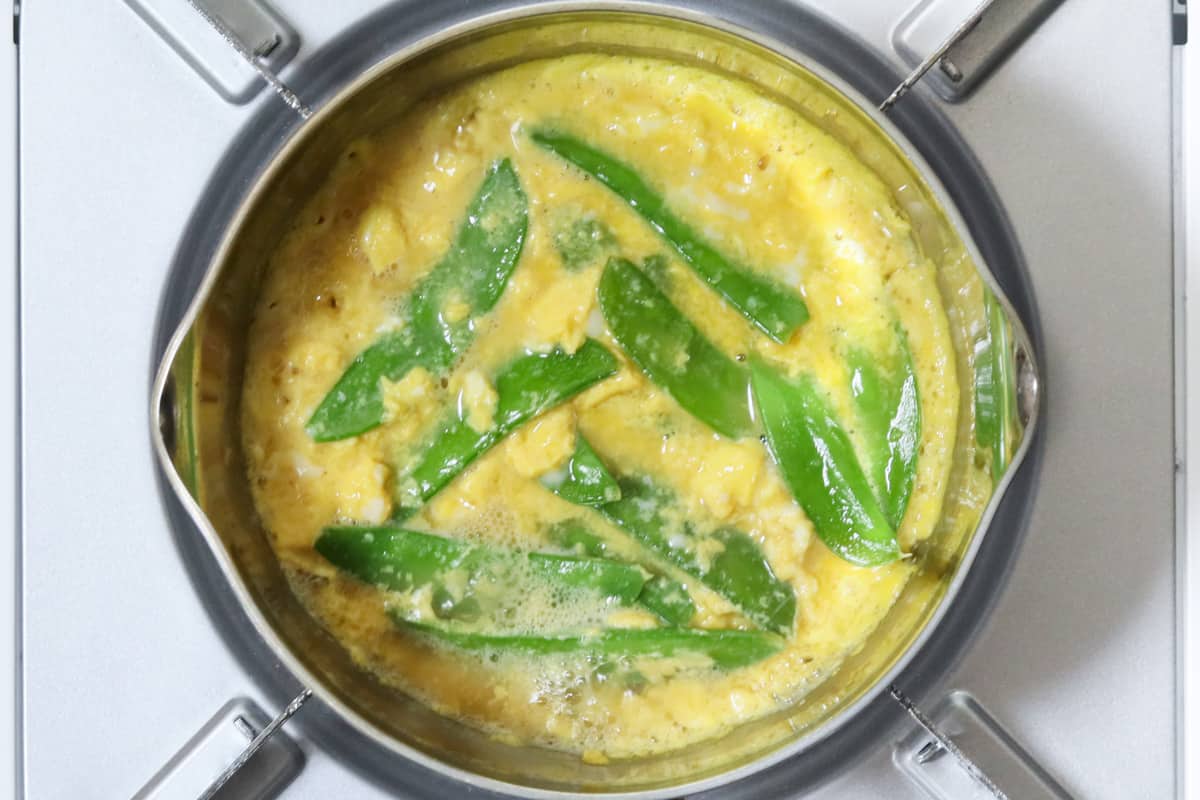
Step 4
Pour the beaten eggs into the pot, ensuring they are evenly distributed, and cook until partially set but still loose. At this point, as the eggs start to set around the edges of the pot, it is best to occasionally push the cooked portions toward the center for even cooking.
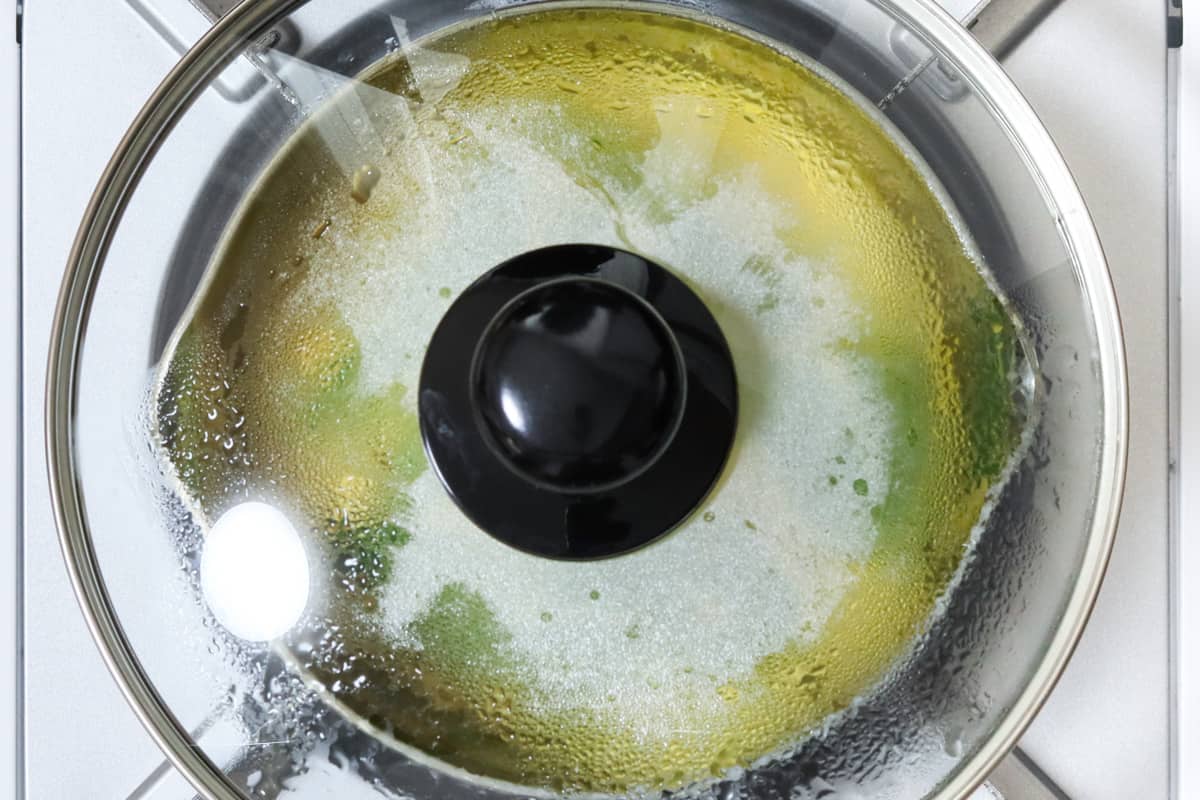
Step 5
Cover the pot, turn off the heat, and let it steam for a few minutes using the residual heat.
To store
You can store it in the refrigerator for up to 2 days.
Cooking tips
- It is important to simmer the snow peas in dashi stock and other seasonings first. If the peas are added later, they may not cook through properly and could retain a grassy flavor.
- Once you have added the beaten eggs to the pot, be careful not to overcook them. Keeping the cooking time short helps the eggs stay fluffy.
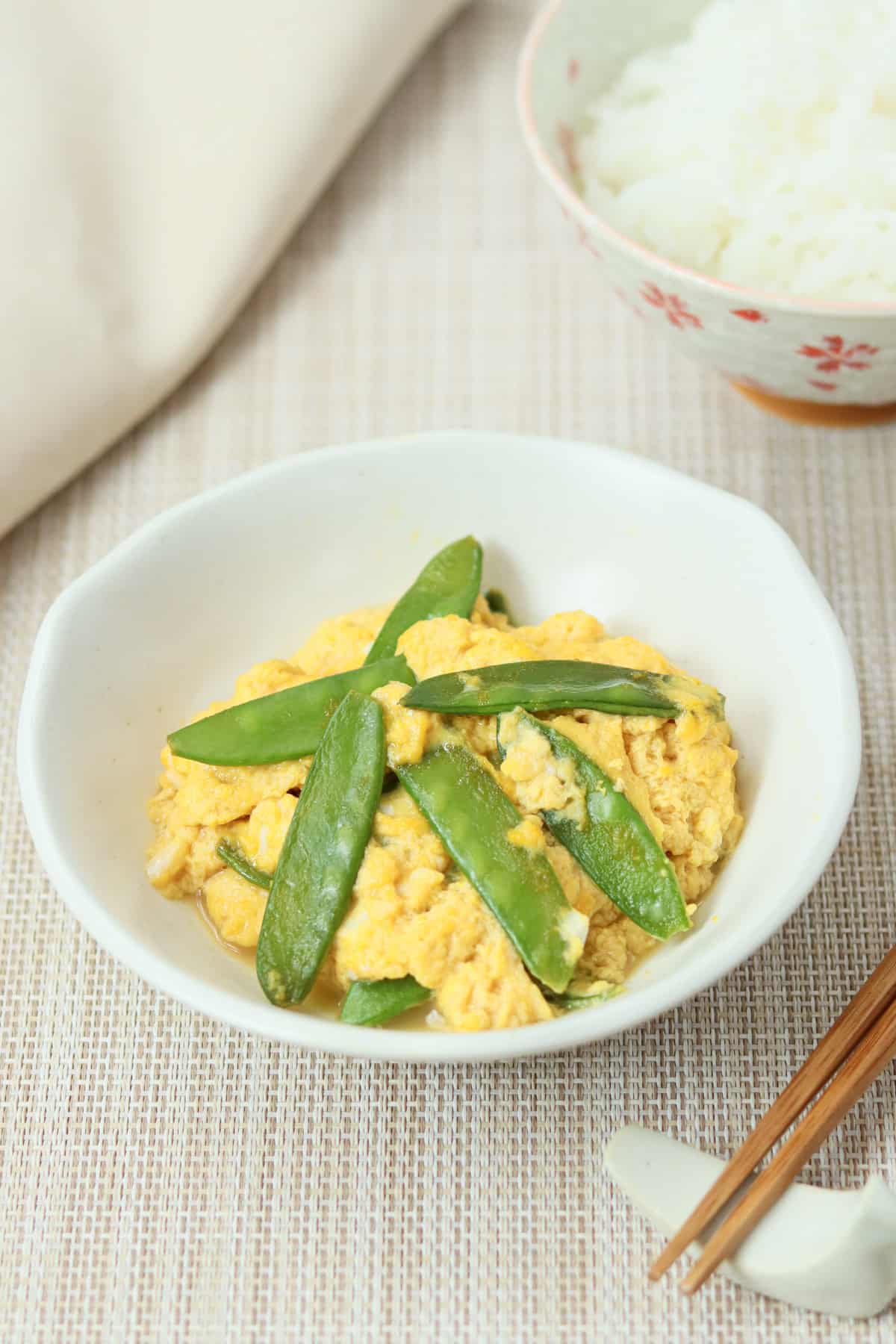
If you try this recipe, I’d love to hear what you think. Please consider leaving a review and star rating in the comments below. If you enjoyed it, I’d really appreciate it if you shared it with your friends.
More egg recipes you'll love
Recipe card

Snow Pea Tamago-Toji (Japanese-Style Snow Peas with Egg)
Ingredients
- 1.4 oz snow peas
- 2 large eggs (about 2.1 oz/60 g each, including shell)
- ⅓ cup dashi stock (Please refer to the linked page for instructions on how to make it. For plant-based options, see the pages on Kombu Dashi and Shiitake Dashi.)
- ½ Tbsp mirin
- ½ Tbsp soy sauce
Instructions
- Snap off the ends of the snow peas and remove the strings running along the seams of each pod.
- Crack the eggs into a bowl and beat them.
- Add dashi, mirin, and soy sauce to a pot and bring it to a boil. Once boiling, add the snow peas and simmer over medium heat for 3 minutes.
- Pour the beaten eggs into the pot, ensuring they are evenly distributed, and cook until partially set but still loose. At this point, as the eggs start to set around the edges of the pot, it is best to occasionally push the cooked portions toward the center for even cooking.
- Cover the pot, turn off the heat, and let it steam for a few minutes using the residual heat.
Notes
- You can store it in the refrigerator for up to 2 days.

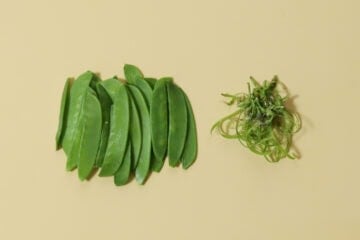

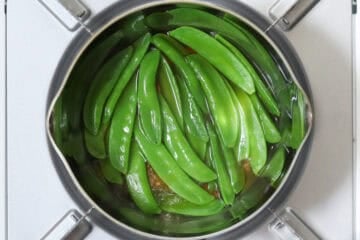
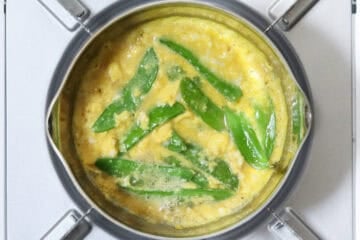
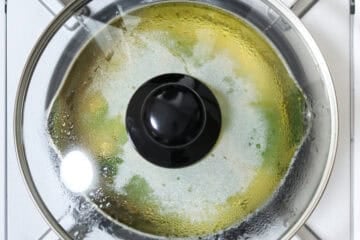
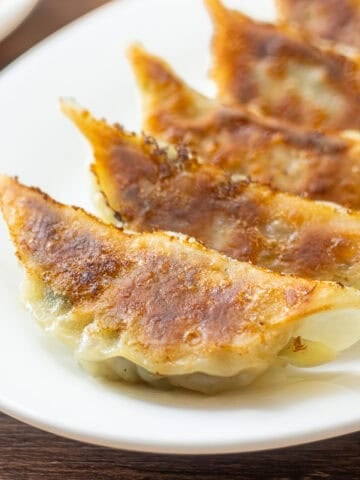
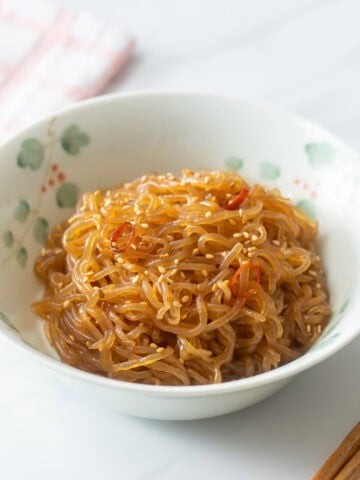
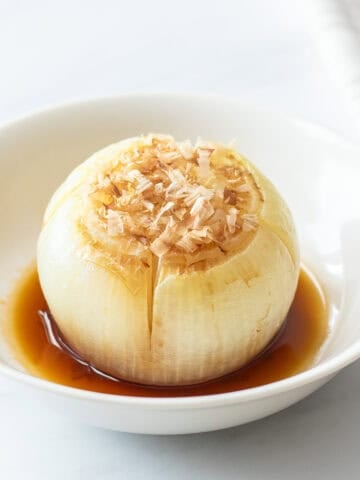
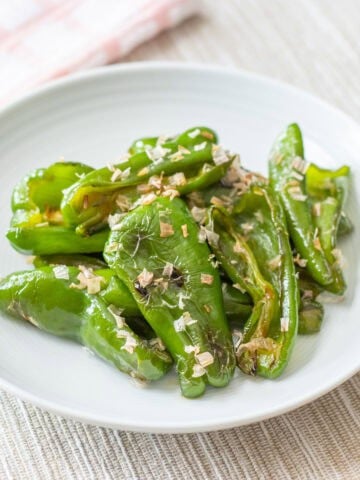
Leave a Rating and a Comment